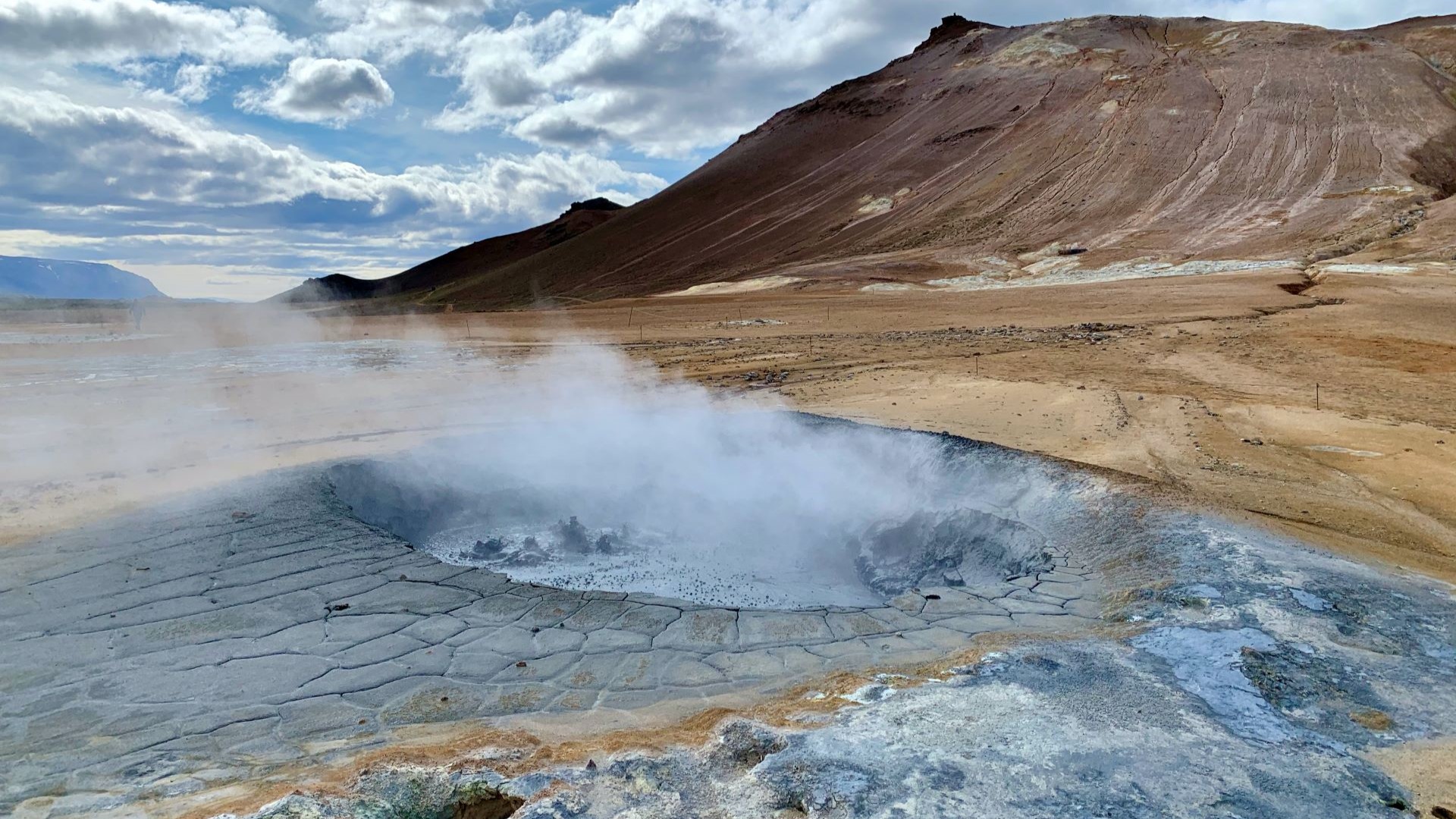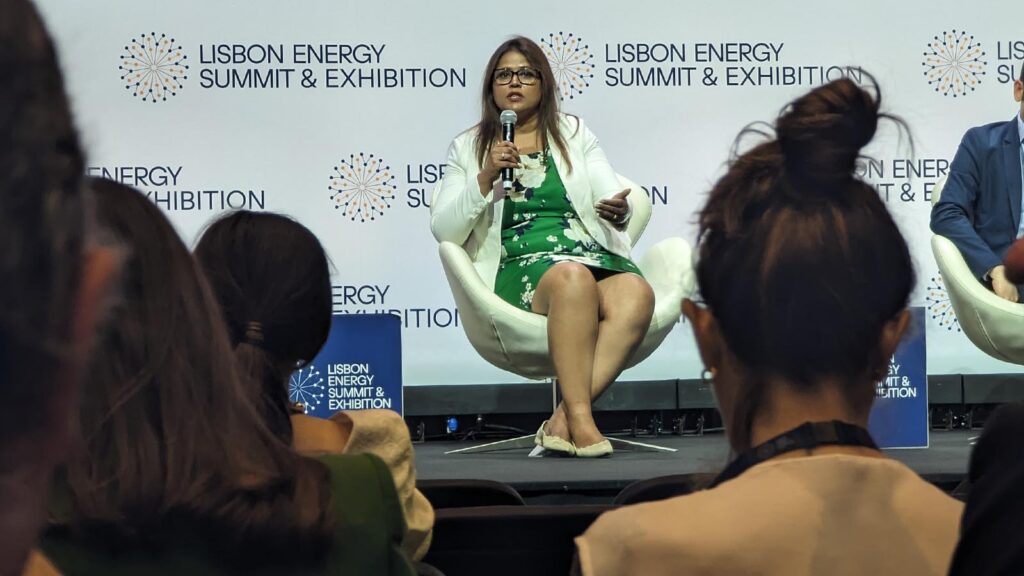Sign up to receive newsletter updates from Accelerate on LinkedIn.
Unpacking geothermal opportunities and obstacles in a global energy transition
The build-out of geothermal energy infrastructure will create more jobs than solar or wind or any other renewable energy source — but it can only happen if the right policies and investments are in place.
“Geothermal creates 34 jobs per installed megawatt of power compared to only 19 jobs from wind power and 12 from solar,” said Bryant Jones, Executive Director of Geothermal Rising, the largest direct-membership professional and trade association serving the geothermal industry globally. “The geothermal industry can also make use of a lot of the existing oil and gas workforce. We need subsurface energy managers and reservoir managers. We need drill operators and rig managers. We need petroleum geologists and engineers and all the people who understand the subsurface.”
A bounty of new jobs is not the only benefit of geothermal, according to Jones.
“With geothermal, you don’t have a supply chain — you’re just using concrete and steel. You don’t have to import critical minerals to build a geothermal power plant and produce the energy, and you can transfer existing technologies from oil and gas into geothermal.”
That last point is important, and we’ll unpack that more later in myth #3 below.
Other than nuclear energy, geothermal also offers the highest capacity factor of any existing energy technology (including solar, wind, and oil and gas). Capacity factor refers to the ratio of the actual output of a power plant over a period of time to the maximum possible output if the plant were operating at full capacity. A higher capacity factor indicates more efficient and consistent operation.
“A nine-megawatt geothermal power plant will create enough electricity to power 5,500 homes a year, whereas a nine-megawatt solar power farm can only produce electricity for 1,800 homes per year,” said Jones. “That is a tremendous difference.”
There’s also an increasing awareness that geothermal may offer transformative benefits as the world shifts from internal combustion to electric engines.
“There’s enough lithium in the Salton Sea alone to manufacture batteries for 375 million electric vehicles,” Jones underscores. “Geothermal companies are already pulling the water out and making electricity and then putting it back in the ground. Now they’re experimenting with capturing that lithium because they realize it’s there.”
Jones says that a major positive aspect of geothermal that doesn’t always get discussed is the public health benefit.
“With the pursuit of lithium, we’re creating huge evaporation ponds — open-pit mining for lithium in places like Argentina, Chile, and Australia.”
Evaporation ponds for open-pit mining of lithium are advantageous because they allow for the natural evaporation of water from lithium-rich brine solutions, concentrating the lithium content for extraction. This method is cost-effective and environmentally friendly, utilizing natural processes to yield concentrated lithium compounds suitable for further processing into battery materials.
“This would be a better environmental and public health solution as we pursue the critical minerals which are so important for the energy transition,” Jones says.
Persistent myths are slowing the build-out of the geothermal industry
With all its advantages, and with energy demand growing across the globe as the energy transition picks up speed, what is the state of geothermal in 2024? How does it fit into the puzzle?
The reality: It’s still a small piece, in part because geothermal is harder for the public, private industry, and even policymakers, to conceptualize.
“One of the strengths of geothermal is that once it’s installed, you don’t see it, you don’t know it’s there,” said Anine Pedersen, Director of Science and External Affairs, Geothermal Rising. “It’s very different from a wind turbine or solar farm where people drive by, and they can see it and understand it. Sometimes we call geothermal the invisible technology. That doesn’t always help with awareness.”
Pramod Jain, CEO of Computer Modelling Group (CMG), agrees, adding that he doesn’t think that will change without policymaker support and more advocacy.
“In the next decade, geothermal energy is anticipated to uphold a modest stake in the global energy sector,” he said. “The drive towards carbon capture and storage (CCS) was catalyzed by the Energy Improvement and Extension Act in the USA, which included incentivizing corporate investments in Carbon Capture, Utilization, and Storage (CCUS) technologies, a milestone over a decade old. Now, we are witnessing a similar growing push towards geothermal energy. Although geothermal energy may not be where we want it to be today, it is poised to play a substantial role in the future energy mix. The discussion around geothermal energy as a viable alternative is gaining momentum, indicating its increasing recognition and potential significance.”
There are three key myths about geothermal that remain barriers to the build-out of the industry:
Myth #1: Geothermal is a new technology
Geothermal is not new. In fact, the first recorded industrial use of geothermal energy for electricity generation occurred in 1904 in Larderello, Italy.
California started producing geothermal electricity in the 1960s. And the Idaho State Capitol building in Boise, Idaho, has been heated with geothermal energy since 1982.
Geothermal has been with us for decades.
Myth #2: Geothermal is only feasible in hot places with volcanoes and earthquakes
The earth is hot everywhere, which means that geothermal is everywhere. It just requires digging and drilling to access it.
New advancements include making drill bits that can withstand deeper (and hotter) drilling conditions, and CO2 Plume Geothermal (CPG).
CPG is an energy extraction technique that utilizes CO2 as both a working fluid and a heat transfer medium. With this method, CO2 is injected deep underground into hot rock formations where it absorbs heat and is circulated back to the surface through production wells, driving turbines to generate electricity. This process not only harnesses renewable energy but also sequesters CO2 underground, offering potential benefits for both energy production and carbon mitigation.
“CPG at scale would mean you don’t have to rely on specific hot areas to access geothermal energy,” said Jain. “It makes it far more accessible regardless of the subsurface geological conditions. It means you can do geothermal pretty much anywhere.”
Myth #3: Geothermal isn’t viable due to technical and engineering reasons
There’s a perception among some that geothermal needs years of additional innovation before it’s ready for prime time. That simply isn’t true.
An enhanced understanding of subsurface geology and improved reservoir management techniques have significantly enhanced the efficiency and cost-effectiveness of geothermal projects.
“Many of the techniques used in geothermal have been evolving over time and we’ve learned a lot from other processes and technologies from across the oil and gas industry,” says Jain. “Take enhanced oil recovery (EOR) and CO2 sequestration, for example, where techniques provide insight into fluid injection and reservoir management. Those EOR techniques can be applied to geothermal projects for optimizing heat extraction and reservoir sustainability.”
Other EOR lessons that can be applied to geothermal include understanding fluid-rock interactions, managing injection pressures, and monitoring subsurface processes to maximize energy extraction and minimize environmental impact.
In addition, modular and standardized designs for geothermal power plants, coupled with advancements in materials science and turbine technology, have streamlined construction processes and reduced capital costs.
All these factors combined make geothermal a scalable technology, today.
How to accelerate the growth of the geothermal energy industry
Jones notes that the 2022 Inflation Reduction Act (IRA), broadly celebrated for its catalytic impacts on the growth of renewables and the overall energy transition, included a critical 30% investment tax credit for geothermal systems.
But he’s also quick to point out that geothermal hasn’t received anywhere near the attention that wind, solar, and CCS have in the halls of government.
“Geothermal has been left out of policy discussions in Washington, D.C. and the state capitals, practically forever. We just have not had a policy champion,” said Jones.
Geothermal advocates say lawmakers have a role to play in removing regulatory red-tape and providing fiscal mechanisms and incentives to reduce capital risks of geothermal energy development.
“They can support research and development, provide funding for pilot projects, and help foster international collaborations,” Pedersen said.
Ultimately, the government needs to treat geothermal the way it treats CCS, Jain adds.
“The push has to come from the government and we need more grants for universities, more Department of Energy-funded projects,” he said. “CCS has seen billions of dollars in support, and geothermal has received a fraction of that.”
At the end of the day, CCS is an important technology in an energy transition, but it’s not an alternate form of energy production.
“The world needs to capture and store CO2, and it also needs newer, cleaner forms of energy,” Jain said. “Geothermal absolutely needs to be part of the future mix.”







